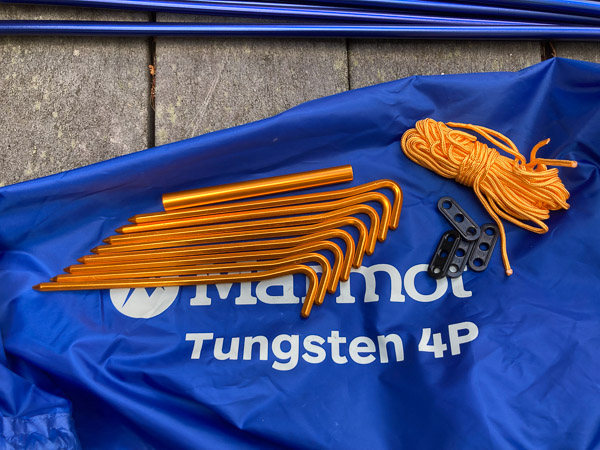Here is my “unpacking the box” review of the 2023 Tungsten Four Person Tent from Marmot. Overall the materials and workmanship appear to be excellent.
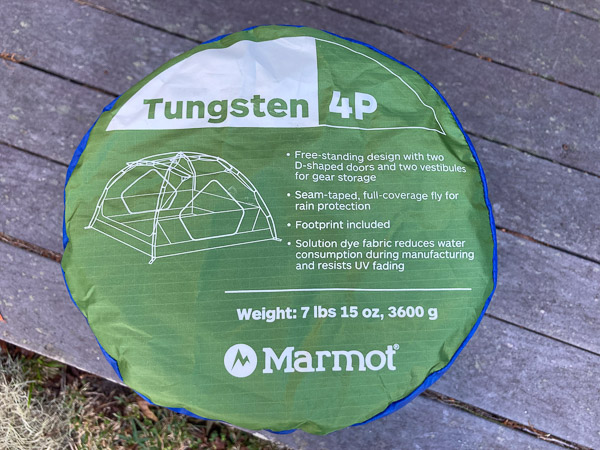
Basics
This is a classic “dome tent” with a rectangular floor and several features of note…
Lightweight aluminum poles define the four corners and are connected by a hinge at the peak. The segment nearest the ground is “pre-bent” to keep the sidewalls near vertical. Two end sections are blue to help guide setup.
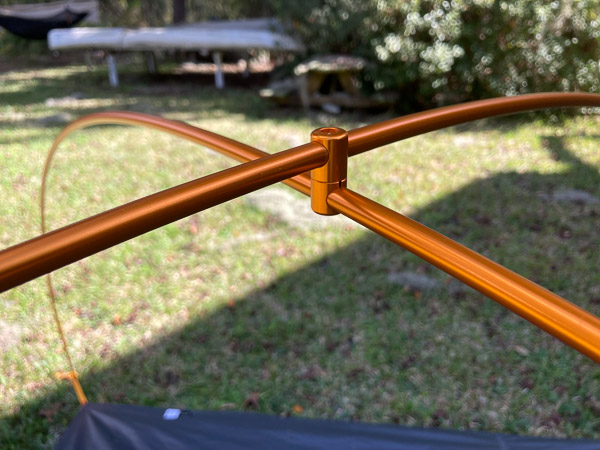
You can erect the basic structure with only the “footprint” (aka custom ground cloth). This is nice and not possible with many tents. It creates a stable clean surface to unfold the tent itself. It does not seem possible to put up the fly without the tent (if it’s raining or as a sun shelter).
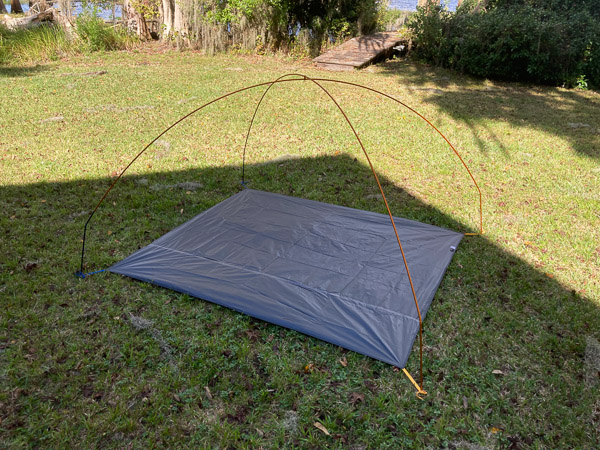
The tent walls clip onto the frame easily, followed by the cross-poles. These pull out the door panels yielding near vertical sidewalls. I really like this design. Many similar tents have a single cross-pole, with less door clearance and stability.
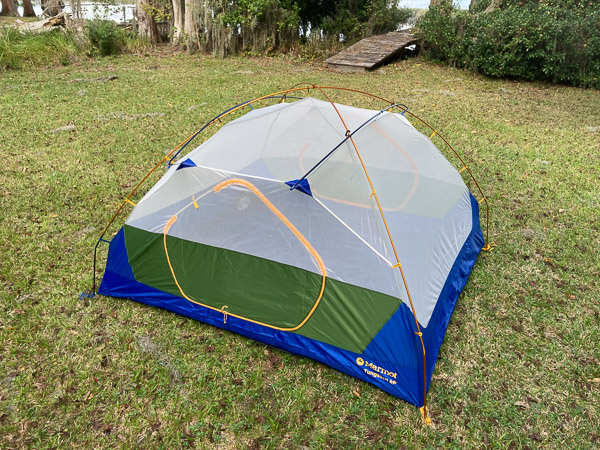
At this point you have a reasonably strong free-standing tent that you can move around as needed. Note that no stakes were needed up to this point (on a non-windy day).
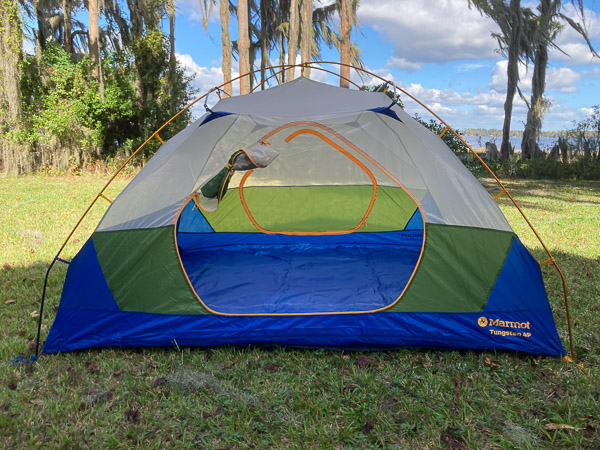
The large doors are identical. There are four traditional small gear pockets near the corners and two “headlamp defuser” pockets in the ceiling. There are also four attachment points around the peak so a gear loft would be possible (but not included).
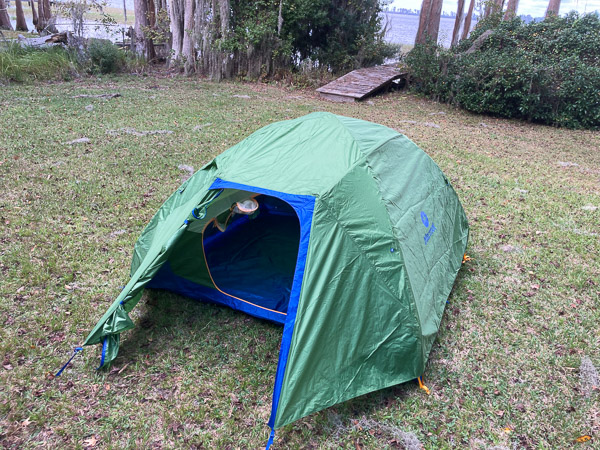
The fly is a standard “staked-out vestibule” design. It takes four stakes (or rocks, tree roots, etc.) to fully shape the fly. Again note that the fly door is wide and crosses the midline. This would not be the case with a single cross-pole. There are two small pop-out vents in the fly, one next to each door. It remains to be seen if these are adequate when the doors are completely closed. It is not obvious if the doors can be rigged partially open.
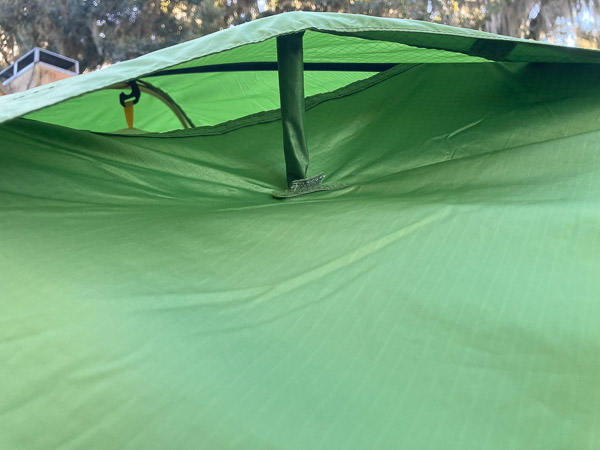
This slightly distorted panorama should give you an idea of the interior size. When car or beach camping I bring lightweight cots as show here. For two people, each with their own door, this tent is palatial! It would be confortable for three, but very cramped for four adults.
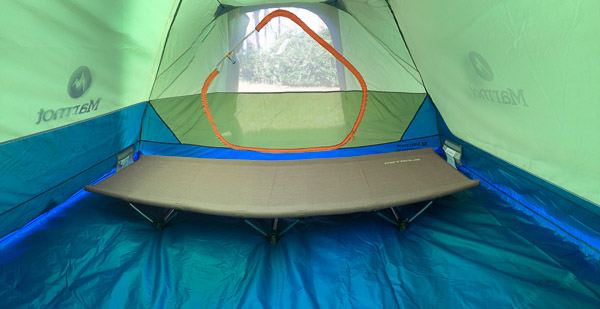
Specifics
I discovered three things that were not obvious and not documented as far as I can tell.
First, if you look at the panorama above, notice the left sidewall is higher than the right. It is unclear to me why this is so?
Next, there is a second set of four grommets under the fly that should be positioned over the ends of the cross-poles (gold webbing in photo). These are very hard to find unless you know where to look!
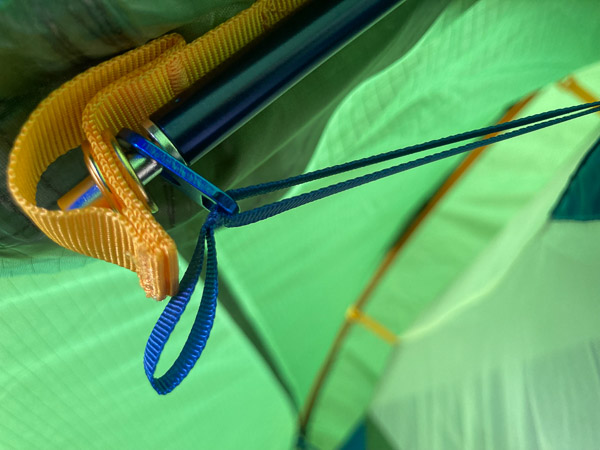
The third is to engage the large black clips over both poles where they cross. This doesn’t affect the fly, but gives the entire tent structure more stability.
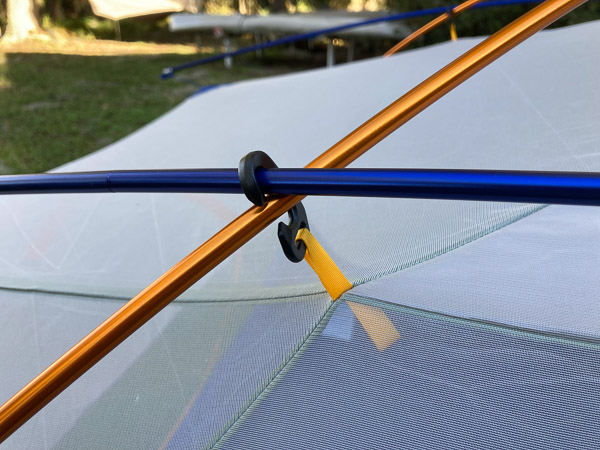
Oddments
With respect to ventilation and water intrusion, the non-door sides of the fly have small tabs for staking out. This is a very common design feature that is often ignored in the field.
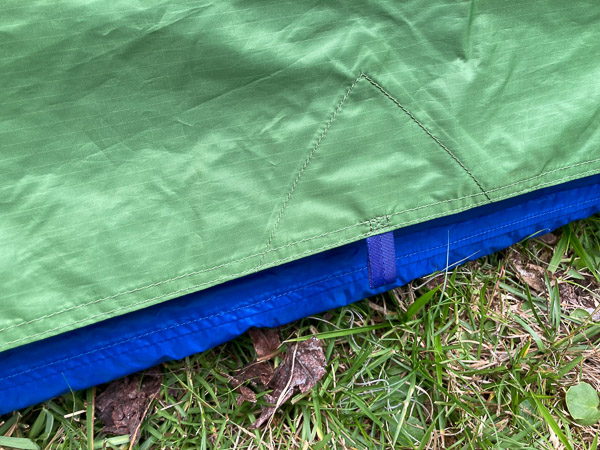
My approach over the years is to tie short loops of bungee cord to these tabs. This makes it easier to stake out the sides and keep them taut. Water is forced away from the floor/sidewall and ventilation is greatly improved!
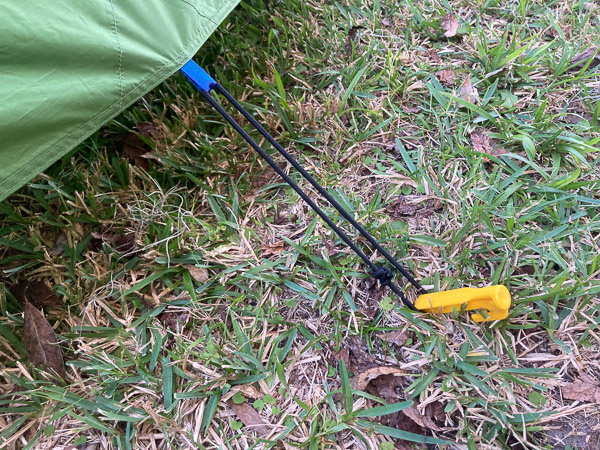
Here is the tent fully deployed with four stakes on the ends and two on the sides. With the addition of the side stakes this becomes a very stable structure and is likely to perform well under windy conditions.
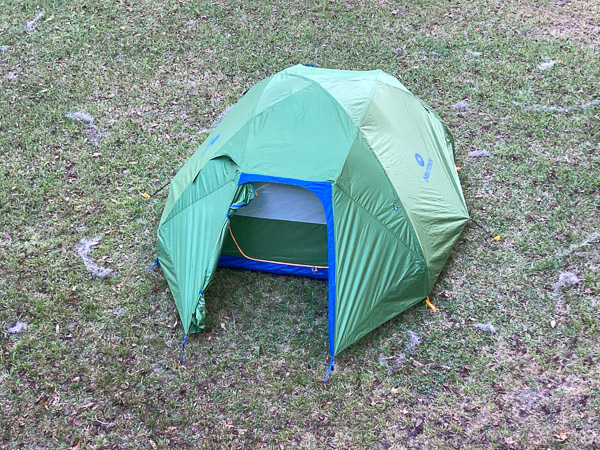
The hardware that comes with the tent is minimal: eight stakes, four 6ft lengths of cord, and an emergency pole repair sleeve. Many online commentators have pointed out that there are not enough stakes to fully secure the tent (no stakes for the pole tie-outs and sides). This is less critical than it seems. First it is rarely necessary to stake down every possible point. Second, it is often necessary to augment the generic stakes with sand-screws or other specialized substitutes (like tying to a rock or tree root).
